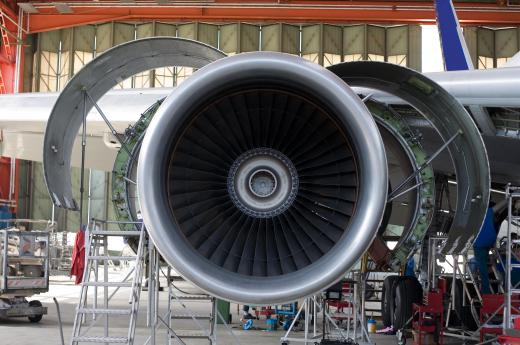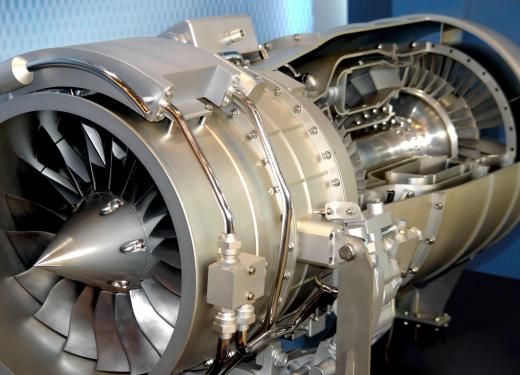A jet compressor is the core mechanism of a jet engine that compresses incoming airflow for the combustion phase of the engine's operation. Jet engines typically consist of compressor and turbine elements and, in the case of turbofan engines, an additional first stage fan element. The compressor supplies high pressure air to the combustion chambers where air and fuel are burnt. The resultant high energy gas flow turns the turbine which supplies the power to operate the compressor, thus sustaining the operational cycle. The jet compressor normally consists of alternating sets of static and rotating radial blades which facilitate the compression of intake air.
There are two basic types of jet engines: turbojet and turbofan. Although they differ in several fundamental ways, their operating principles remain the same and both utilize internal jet compressor elements. In modern high bypass turbofan engines, the compressor is the second stage of the engine and is preceded by a large bypass fan. The air entering the engine is accelerated by the bypass fan and directed into the compressor which typically consists of two parts — low and a high pressure stages. As the air passes through these two stages, it is progressively compressed to extremely high pressures and forced into the engines combustion chambers.

In the combustion chambers, the compressed air is mixed with jet fuel and ignited. The resultant blast of high energy gas is directed through a set of turbines, again a low and high pressure stage, which turn and provide the rotational energy needed to turn the compressors. This cycle is maintained as long as fuel is supplied to the engine. In older turbojet engines, there is no bypass fan; the jet compressor represents the first stage of the engine. The rest of the process remains the same though. The high bypass engines are, however, far more efficient and quiet.

The jet compressor is little more than a series of fans which progressively increase the pressure of the air passing through them. These fans are typically made up of alternating series of static and rotating blades. This arrangement provides impetus for the air and an alternating series of obstructions which compresses the air. The rotational speeds involved in most jet compressor elements are extremely high, and the fan discs are engineered to be finely balanced and very robust to withstand the stresses involved. A compressor disc failure during operation is usually a catastrophic event with fractured discs often exiting the engine and even completely penetrating the aircraft's fuselage.
